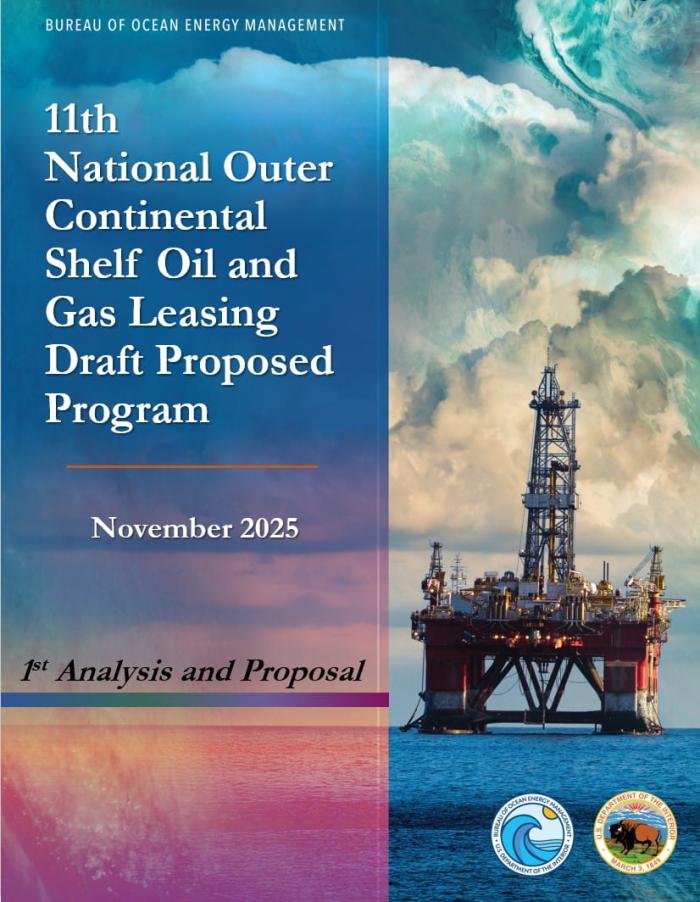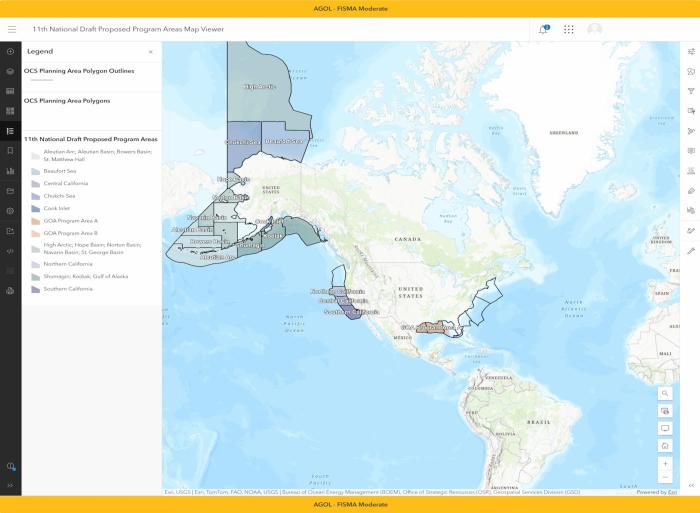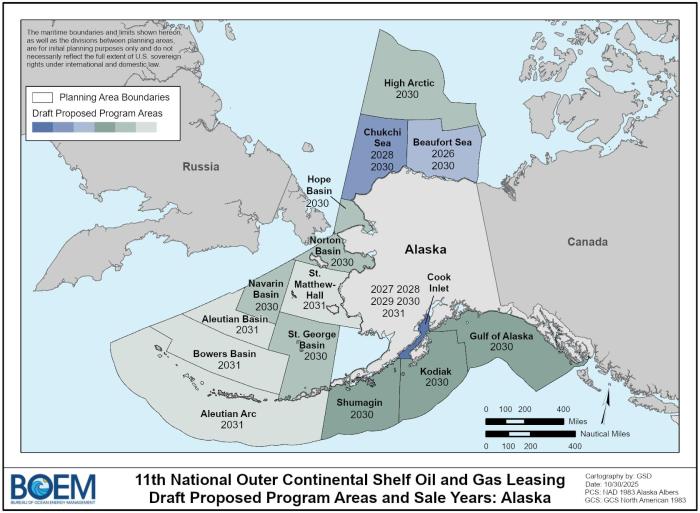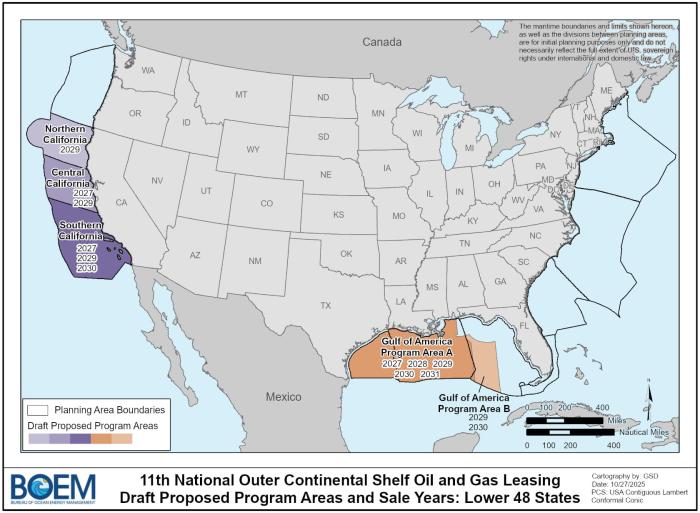Introduction
Under Section 18 of the Outer Continental Shelf (OCS) Lands Act, the Secretary of the Interior is responsible for approving a schedule of OCS oil and gas lease sales for a 5-year period. The approved schedule is called the National OCS Oil and Gas Leasing Program (National OCS Program). BOEM is responsible for developing the National OCS Program, advising the Secretary, and administering the National OCS Program once adopted. See the Overview for more information.
Development of the 11th National OCS Oil and Gas Leasing Program
- RFI completed
- 1st Analysis
- 2nd Analysis not completed
- 3rd Analysis not completed
- Approval not completed
The program development process includes five main steps and BOEM is on the second step.
1. Request for Information (completed)
On April 18, 2025, the Department of the Interior announced the first step in a robust public engagement process to develop a proposed schedule for offshore oil and gas lease sales on the U.S. Outer Continental Shelf (OCS).
On April 29, 2025, BOEM announced that the Request for Information (RFI) for the 11th National Oil and Gas Leasing Program would be published in the Federal Register on April 30, 2025. Publication of the RFI opened a 45-day public comment period that ended on June 16, 2025. This comment period served as the initial step in a multi-year planning process. To view RFI details or comments submitted, visit the regulations.gov web portal at https://www.regulations.gov/document/BOEM-2025-0015-0003.
2. Draft Proposed Program—1st Analysis and Proposal (in progress)
On November 20, 2025 after considering all Outer Continental Shelf Lands Act Section 18 requirements and factors, as well as input from governors, industry, and the public, the Secretary of the Interior announced his 1st Proposal on the 11th National OCS Program.
- 1st Analysis and Proposal Document
- Federal Register Notice of Availability
- Comment Docket BOEM-2025-0483
The Secretary proposes 34 potential lease sales in three of the four OCS Regions and in 21 of the 27 OCS Planning Areas.
1st Proposal Regional Sale Summary
| Region | Starting in Year | Number of Sales |
|---|---|---|
| Alaska | 2026 | 21 |
| Gulf of America | 2027 | 7 |
| Pacific | 2027 | 6 |
| Total | 34 | |
National OCS Program Development Process and Status
How to Submit Comments
The comment period on the 1st Analysis and Proposal will end on Jan. 23, 2026.
- Preferred Method: Regulations.gov (Docket ID: BOEM-2025-0483) to submit comments and view other comments.
- In writing and mailed in an envelope labeled “Comments for the 11th National OCS Oil and Gas Leasing Program.” Addressed to Ms. Kelly Hammerle, Bureau of Ocean Energy Management (VAM-LD)
45600 Woodland Road, Sterling, VA 20166-9216
11th National OCS Program Development
Request for Information and Comment (RFI)--published April 2025
- Requested information and comments from all stakeholders regarding all 27 planning areas.
45-day comment period - closed June 2025
Draft Proposed Program – 1st Analysis & Proposal
- Presents analysis of all 27 OCS planning areas
- Presents the Secretary’s 1st Proposal, which reflects areas that will remain under leasing consideration
60-day Comment Period (Nov. 24, 2025 – Jan. 23, 2026)
- Proposed Program – 2nd Analysis & Proposal
- Proposed Final Program – 3rd and Final Analysis & Proposal
- Approval
11th National Program notices, analytical documents, and comment dockets
| Program Development Step | Federal Register Notice | National OCS Program Documents | Comment Period Dates | Comment Docket |
|---|---|---|---|---|
| 1. Request for Information (RFI) | Federal Register Notice April 30, 2025 | April 18, 2025 - June 16, 2025 | BOEM-2025-0003 | |
| 2. 1st Analysis and Proposal (Draft Proposed Program -DPP) | Federal Register Notice of Availability and Request for Comment November 24, 2025 | 1st Analysis and Proposal PDF | Nov. 24, 2025 - Jan. 23, 2026 | BOEM-2025-0483 |
| 3. 2nd Analysis and Proposal (Proposed Program) | Pending | Pending | Pending | Pending |
| 4. 3rd and Final Analysis and Proposal (Proposed Final Program) | Pending | Pending | ||
| 5. Program Approval |








